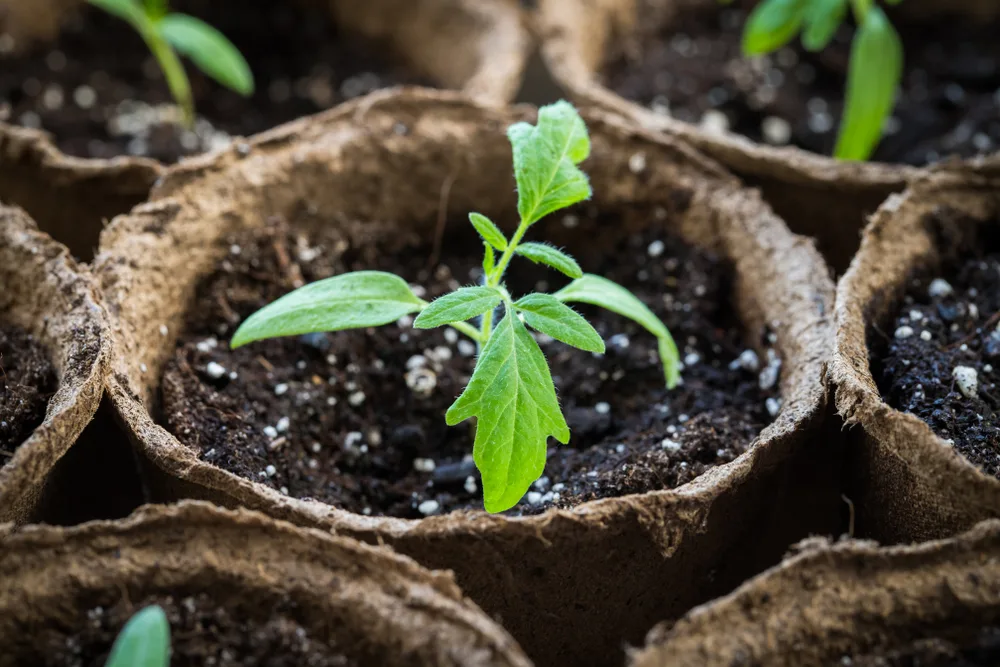
You don’t need to wait for spring to arrive before you get your garden started. In a colder climate zone, it makes sense to get started by sowing seeds early in the year – indoors on your windowsills.
Starting your own seedlings is a great way to make the most of a short growing season. In climates like mine, sowing tomatoes and peppers indoors is one of the first gardening jobs of the year.
Sowing seeds indoors can be beneficial in extending your growing season. But it can be tricky, and it’s easy to get it wrong. If new seedlings aren’t tended to correctly you can end up with spindly little plants that will take more time to catch up once they’re transplanted. Or worse, all of your hard work may end up being in vain if your seedlings don’t even make it out to the garden.
Here are ten tips that will help you achieve healthy and hardy peppers and tomatoes.
1. Choose the Right Varieties for Your Climate Zone
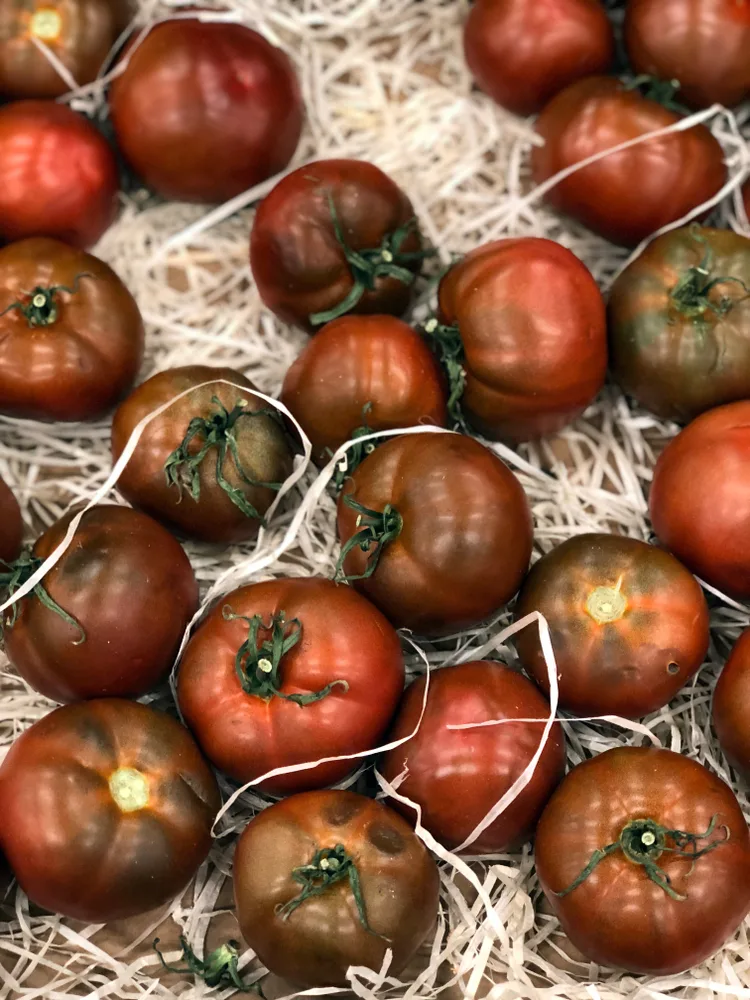
When choosing which tomatoes and peppers to grow, it’s important to think about the climate and conditions where you live.
You need to think about the length of your growing season. Check out your USDA plant hardiness zone if you don’t’ know it already. Knowing your hardiness zone makes choosing plants for your climate much easier as the hardiness zone for each variety is listed in the catalog, website, or back of the seed packet for each variety.
It’s also important to consider whether you’ll be growing these crops outdoors or in an undercover growing area such as a greenhouse or high tunnel.
Of course, choosing what to grow goes beyond your climate. You also need to think about taste and what you intend to use your tomatoes and peppers for. Another consideration is whether or not you’ll be saving your seeds. If the answer is yes, opt for heritage or heirloom varietals rather than F1 hybrids.
Why Can’t I Save Hybrid Seeds?
Hybrids are varieties that have been crossed to achieve a specific result (i/e. pest resistance, bigger fruits, larger yields, a specific color) but those traits won’t be passed into the resulting seed from that fruit. So, in the end, the seeds won’t carry the hybrid traits of the parent plants.
Choosing Varieties for Cooler Climates
But in terms of your location, it’s also important to think about the length of time to harvest. Some tomato and pepper varieties take much longer to mature than others. Those with a shorter time to harvest – quick maturing types – are best for climate zones with a shorter growing season.
While there are plenty of short-season tomato varieties to consider here are a few examples:
- Bloody Butcher
- Black Prince
- Aurora
- Latah
- Stupice
‘Indeterminate’ tomato types tend to be the mainstay of short-season gardens. Many can produce tomatoes in as few as 55 days from planting.
What’s the difference between determinate and indeterminate varieties?
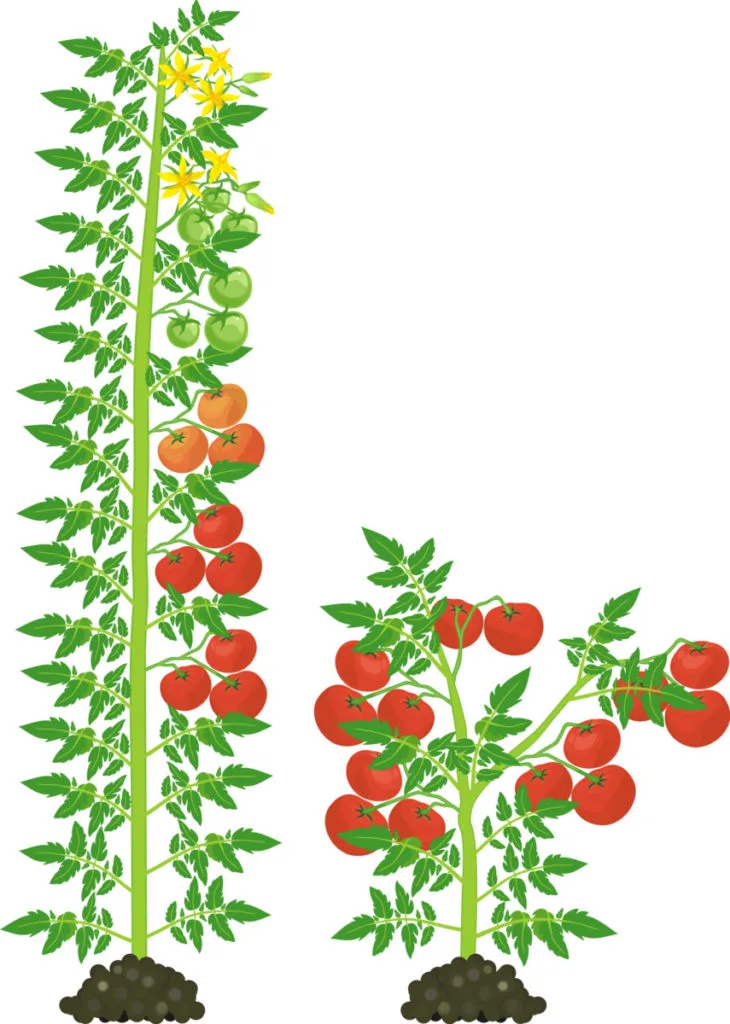
Determinate varieties reach a certain height and stop growing, limiting their overall yield. Indeterminate varieties will continue to grow throughout the entire season, producing fruit along all of its stems. Naturally, indeterminate varieties require more space and support, but they’re a great choice for anyone with a shorter growing season.
By choosing fast maturing types of tomato and pepper, in addition to starting seeds indoors, can help you maximise your chances of obtaining a worthwhile yield before cold weather arrives once more.
2. Start Sowing at the Right Time For Your Location
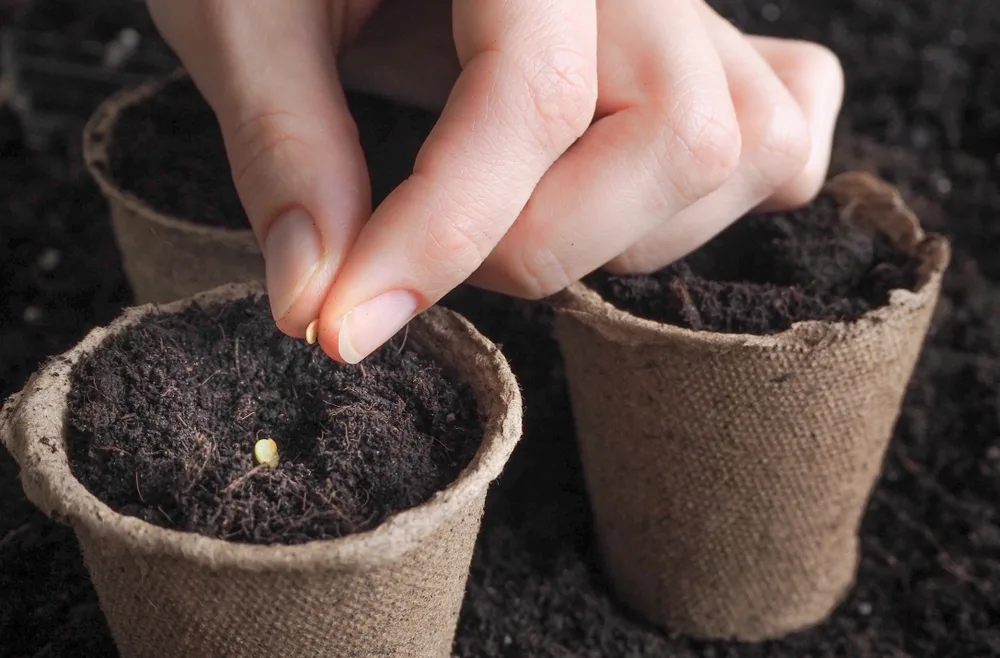
Sowing indoors means you can start your tomatoes and peppers much earlier. Again, however, it’s important to take your location into account. Typically, cold-climate gardeners will sow indoors quite early in the year as early as January or February.
For instance, here in Scotland, I typically sow tomatoes and peppers in late January or early February. This gives me a head start on the growing season. I will keep the seedlings on my windowsills indoors, potting them up as required, and won’t typically plant them in the polytunnel until late April or early May.
3. Consider Your Containers
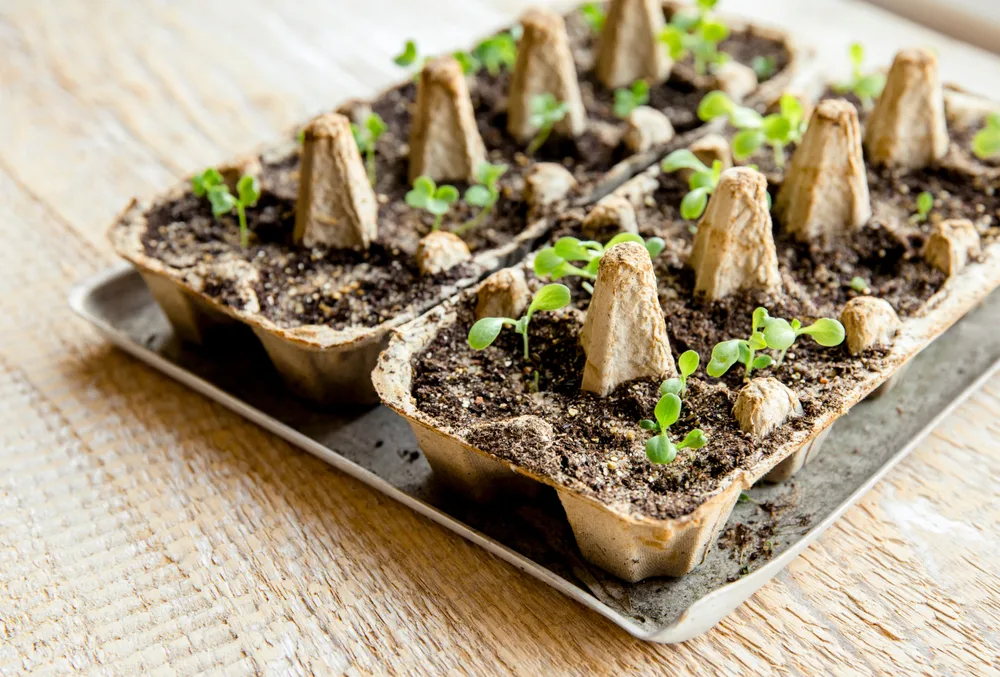
Tomato and pepper seeds need to be kept at the right temperatures. They also need sufficient moisture without becoming waterlogged. Thinking about the materials containers are made of and their size can help you avoid some common pitfalls.
The good news is that you don’t need to rush out and buy new containers to sow your seeds and grow your seedlings indoors before planting them out. There is a wide range of reclaimed waste materials, such as plastic milk containers, that you can use for seed trays or seed starting flats and pots.
If you’re reusing old containers, whether they’re food containers or plant pots, make sure they are thoroughly clean. Dirty containers can increase the chances of damping-off (a fungal problem) and other diseases taking hold.
You should also consider starting seeds in biodegradable pots – such as lemon rinds, eggshells, egg cartons, and more. Here are six ideas.
4. Consider Your Growing Medium
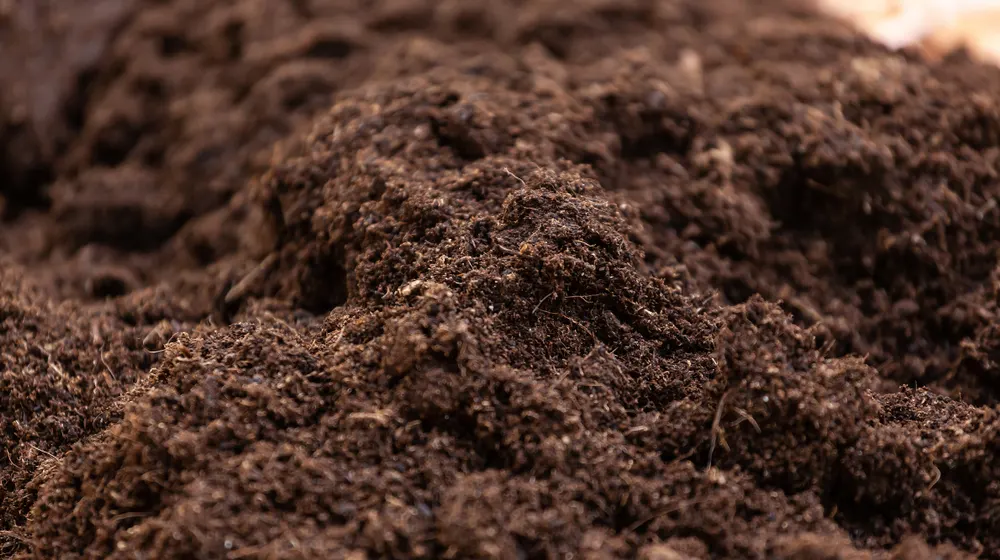
As well as thinking about your seed starting trays or pots, you should also think carefully about your growing medium. The medium that’s ideal for starting seeds isn’t necessarily the same medium that’s ideal for growing seedlings.
To start tomato and pepper seeds, you simply need a sterile potting mix. The purpose of the mix is simply to provide a medium to enable the seed to sprout and survive until true leaves form.
Never use garden soil to start your seedlings as it can harbor disease and pathogens that can kill your seeds.
5. Choose the Right Location For Your Seeds and Seedlings
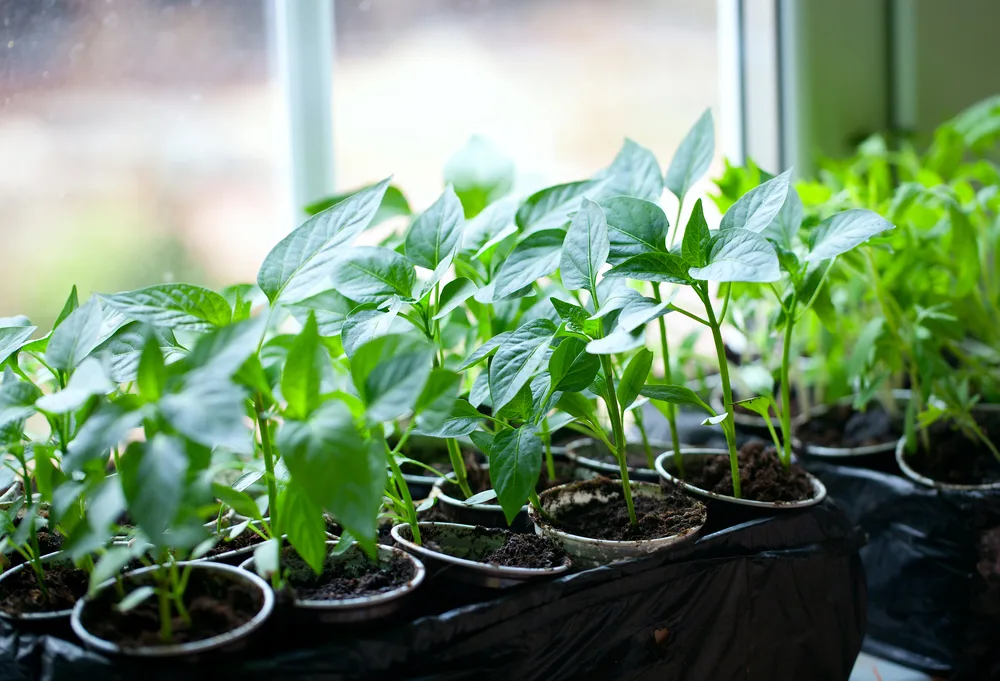
Where you place your seed starting trays and pots is just as important as the pots themselves and how you fill them.
Tomatoes need a minimum temperature of 40 degrees F for germination, but the best germination rates come from temperatures between 60 and 85 degrees F.
Peppers require temperatures between around 65 and 95 degrees F and will do best at around 85 degrees F.
As most of us rarely keep our homes at 85 degrees, it’s a good idea to start your seeds on a seedling heat mat. Once your seeds have germinated, a sunny windowsill will provide the right amount of heat. Choose a south-facing windowsill that’s free from drafts, and the seedlings should thrive at normal room temperature.
6. Use Grow Lights To Prevent Leggy Growth
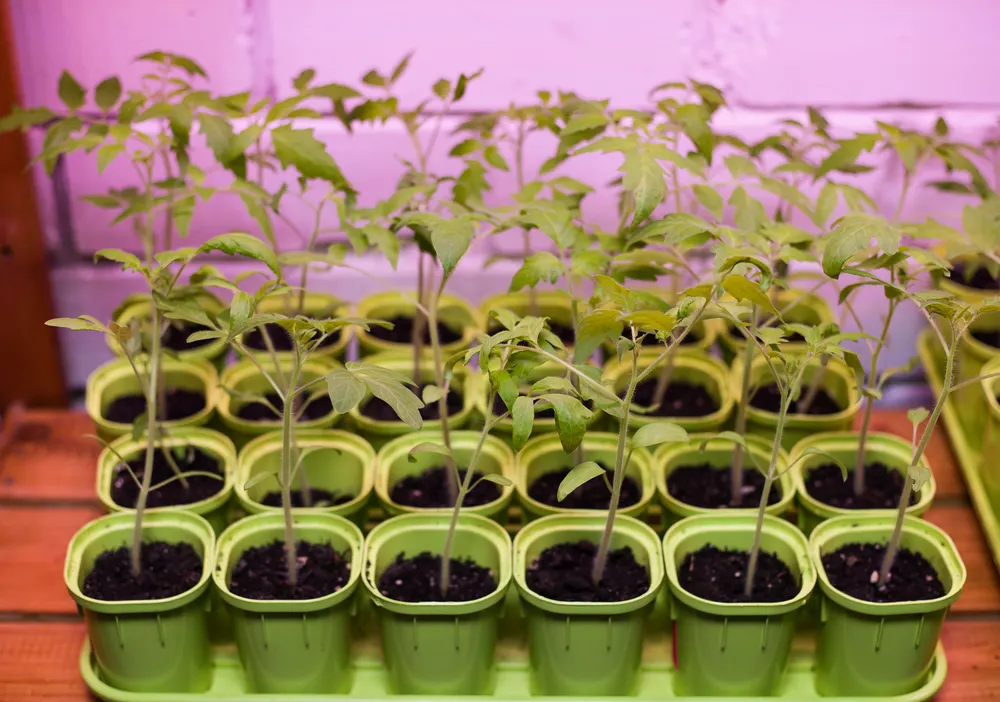
One of the main challenges for growers with cold, dark winters is that low light levels can become a problem – especially when sowings indoors. Even on a windowsill, seedlings may still not get as much daylight as is needed to produce sturdy plants.
Tomatoes and peppers can become leggy if they aren’t grown in the ideal light. In extreme cases, stems can become weak and floppy, and young plants may bend over towards the light.
If the natural light levels are too low, the solution is to use grow lights. Simple LED grow lights are now moderately inexpensive. And a small strip of them should help keep your tomato and pepper seedlings happy. They should help to avoid the legginess problem and keep the plants happy and healthy until the days grow longer.
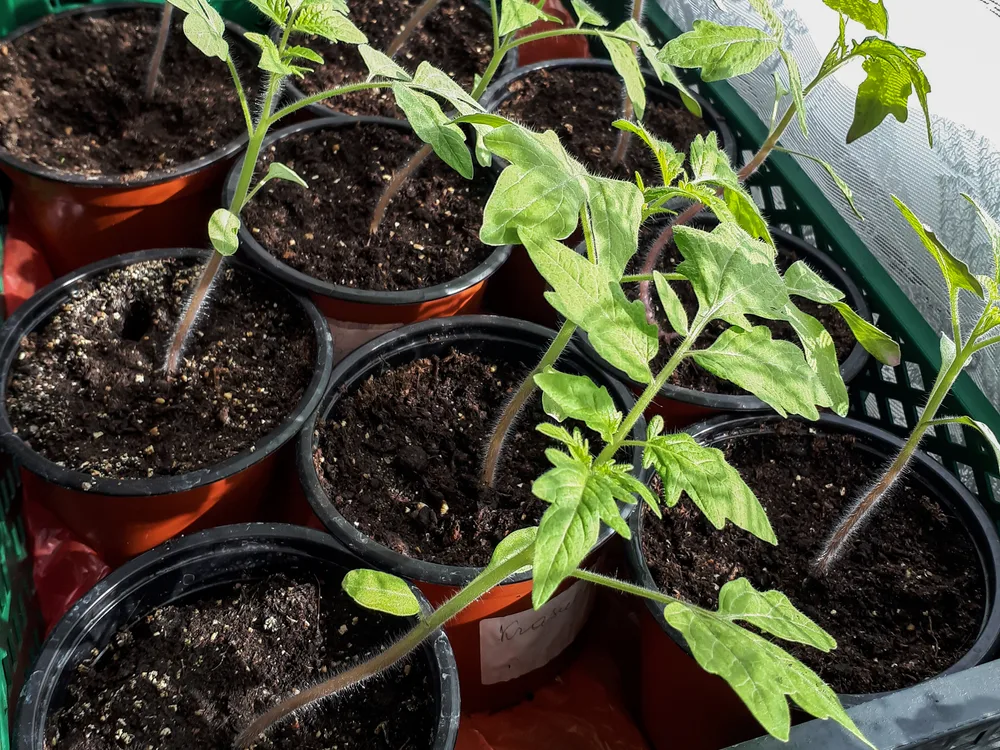
Whether or not grow lights are a good idea will of course depend on the light levels and climate zone in which you live. If you don’t wish to invest in grow lights, you can still achieve reasonably good results. Turn trays and pots around regularly to prevent leaning towards the light. And consider placing foil to reflect light and maximise the amount of it your seedlings receive.
Buying LED grow lights can be a real minefield. Take a look at our guide to demystifying LED grow lights here so you can understand what you need.
7. Thin Seedlings Before Competition Becomes a Problem
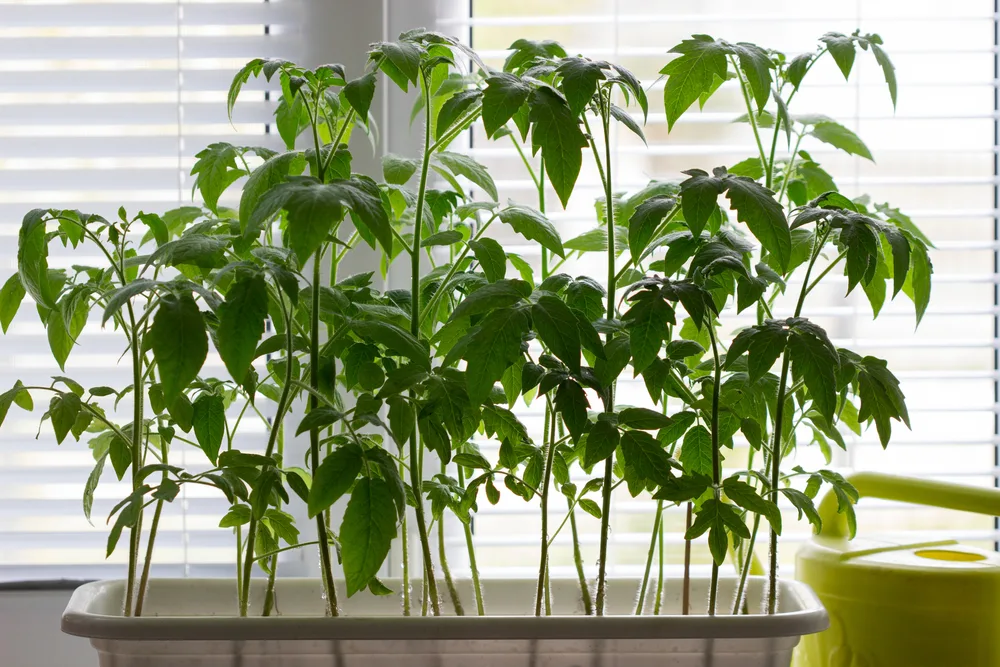
One easy mistake to make when starting seeds indoors is waiting too long before thinning out their seedlings and moving them to their own separate containers. You can thin out the tomatoes and peppers from your seed trays carefully as soon as the first true leaves have formed and they’re large enough to handle.
You might dispose of excess seedlings by simply removing the weaker specimen or specimens from each pot. Or you might move a whole tray of tomatoes and peppers seedlings into individual pots. Just make sure that you do so promptly, so the seedlings don’t have to compete with one another. This competition may result in weak plants and a reduced yield.
8. Repot Seedlings As Necessary
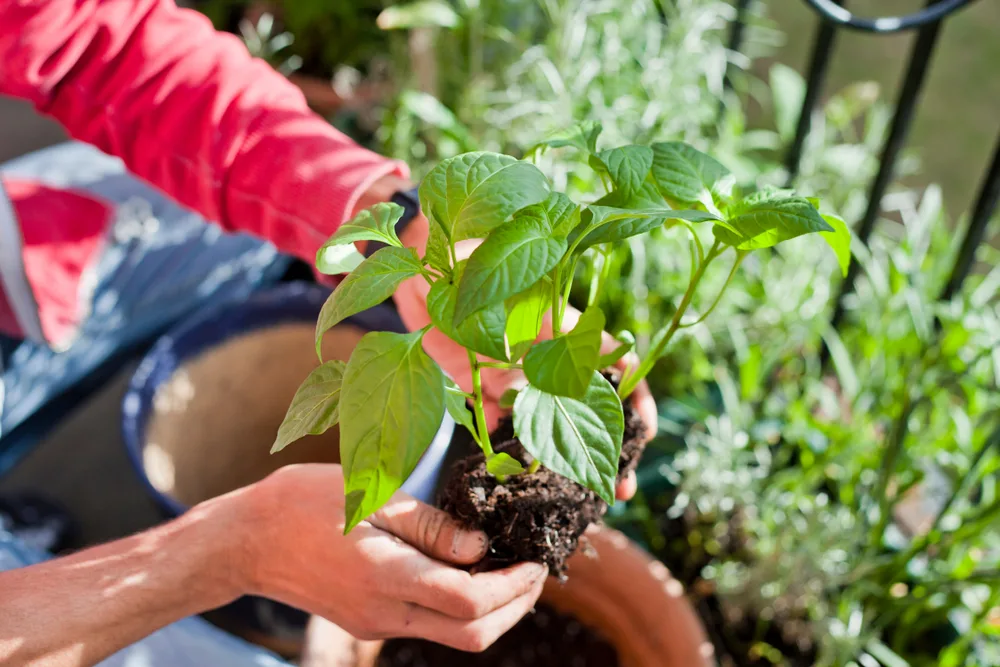
If you don’t repot tomatoes and peppers when it’s necessary, then their growth may be stunted. They may even begin to flower prematurely.
Transplant your seedlings into pots once their first set of true leaves have formed. After the first transplant, check your seedling’s roots periodically by lightly squeezing the pot and gently lifting the plant from its container. If the roots are becoming crowded or too long it’s time for a bigger pot. It’s important not to let the roots reach the base or protrude from your containers.
The Secret Trick for Sturdy Tomato and Pepper Plants With Healthy Roots
When it comes to repotting tomatoes and peppers, you shouldn’t repot with your growing medium at the same level on the stem. Instead, each time you repot, plant the young plant deeper, so the growing medium is higher up the stem.
New roots will grow from the buried section of the stem, so by the time you move your tomatoes and peppers to the garden, they’ll have stronger and healthier root systems.
9. Get It Right When it Comes to Watering Tomatoes and Peppers
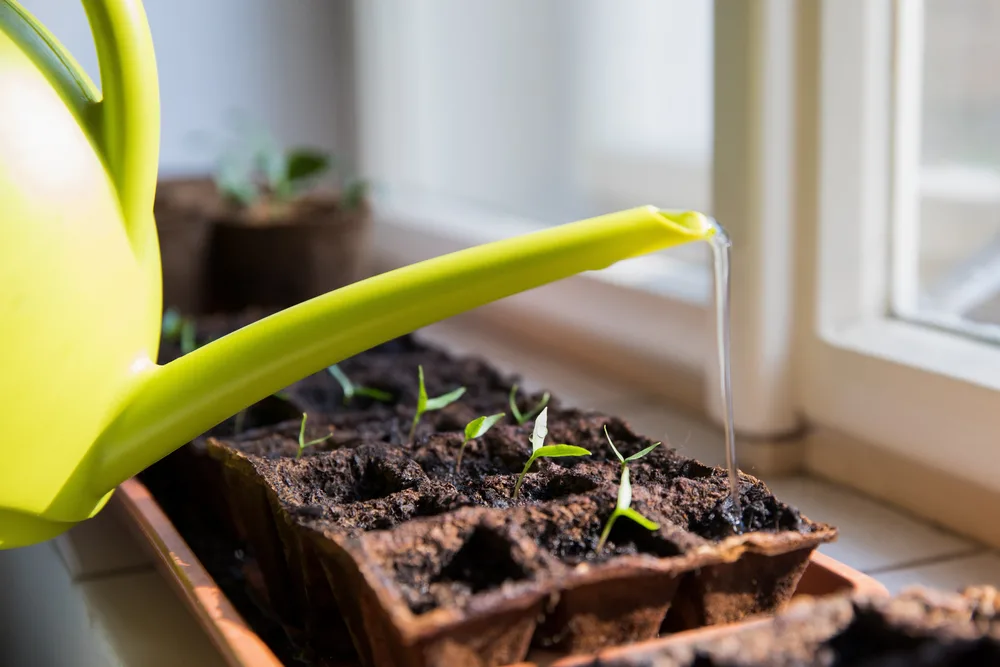
Another common issue when seeds are sown indoors is watering too much or too little. Remember that plants grown in pots or containers will typically need more watering than plants in the ground.
While indoor air is generally less humid than outdoor air, it’s especially important to remember in the winter when the air is dryer in your home because of heating.
A good rule of thumb is to check seedlings daily. Even one day of sitting in parched soil can be enough to kill off your seedlings.
Consider keeping seedlings covered to keep the growing medium moist until the plants are well established. And of course, it’s better to water deeply and less often than more frequently and sparingly. This encourages deeper and stronger root systems in the long run.
10. Harden off Tomatoes and Peppers Grown Indoors
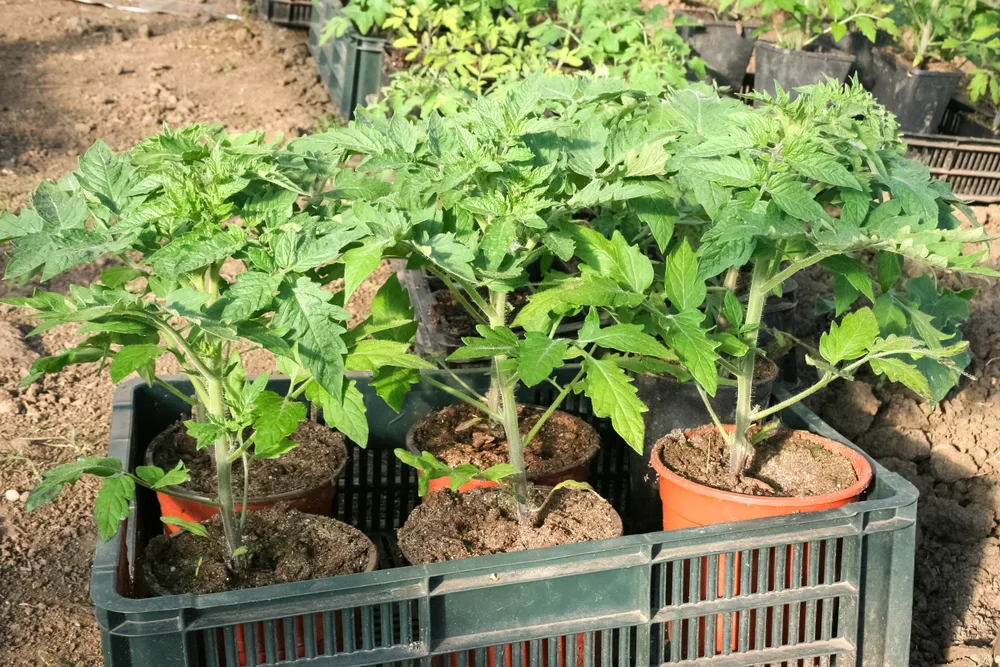
How many times you repot your tomato and pepper seedlings will of course depend on how swiftly they grow and the environmental conditions. Of course, it also depends on when you can transplant summer crops in your area.
Regardless of repotting, there is one final step you have to do before you plant your tomatoes and peppers in your garden – hardening off.
Hardening off is simply the process of acclimatizing your indoor grown plants to outdoor conditions.
This is essential to avoid issues with transplant shock. And it’s particularly important for tomatoes and peppers since these crops are typically grown inside over a longer period than other spring-sown seeds.
How to Harden Off Tomato and Pepper Plants
You’ll want to begin hardening off your plants about a week before you plan on transplanting them in the garden. Make sure your plants are well watered before beginning.
Take your plants outside and place them in an area that’s somewhat protected from the elements. You don’t want them sitting somewhere in direct sun or in a place that receives a lot of wind.
Let the plants sit outside for an hour and then bring them back in. Each day, add another hour to their time spent outdoors. Within a week they’ll be up to seven hours a day spent outside and should be ready to brave the big outdoors permanently.
If you have especially spindly plants you may wish to harden them off for ten days instead of seven.
You can also begin the hardening off process indoors by placing a small fan set to low facing your transplants. The moving air will begin to strengthen your plant’s stems. However, if you choose to go this route it’s important to make sure the plants don’t dry out.
There is more to learn about successfully growing tomatoes and peppers. But using these tips will help you get your plants off to a good start in the next few months.

And of course, there’s nothing better than seeing those tiny green leaves poke out from dark black soil on gray, winter day to remind you that spring is definitely on the way.
Read Next: 20 Tomato Growing Mistakes Way Too Many Gardeners Make

Get the famous Rural Sprout newsletter delivered to your inbox.
Including Sunday musings from our editor, Tracey, as well as “What’s Up Wednesday” our roundup of what’s in season and new article updates and alerts.

